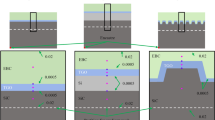Abstract
The durability of coated Nicalon silicon carbide fiber-reinforced carbon (SiC/C) as the flap and seal exhaust nozzle components in a military aerospace turbine engine was studied. Test specimens machined from both a flap and a seal component were tested for residual strength following extended ground engine testing on a General Electric F414 afterburning turbofan engine. Although small amounts of damage to the protective exterior coating were identified on each component following engine testing, the tensile strengths were equal to the as-fabricated tensile strength of the material. Differences in strength between the two components and variability within the data sets could be traced back to the fabrication process using witness coupon test data from the manufacturer. It was also observed that test specimens machined transversely across the flap and seal components were stronger than those machined along the length. The excellent retained strength of the coated SiC/C material after extended exposure to the severe environment in the afterburner exhaust section of an aerospace turbofan engine has resulted in this material being selected as the baseline material for the F414 exhaust nozzle system.
Similar content being viewed by others
References
J.M. Staehler and L.P. Zawada: “Performance of Four Ceramic-Matrix Composite Divergent Flap Inserts Following Ground Testing on an F110 Turbofan Engine,” J. Am. Ceram. Soc., 2000, 83(7), pp. 1727–38.
R. John, L.P. Zawada, and J.L. Kroupa: “Stresses Due to Temperature Gradients in Ceramic-Matrix-Composite Aerospace Components,” J. Am. Ceram. Soc., 1999, 82(1), pp. 161–68.
A.K. Gopalan, J.A. Manteiga, and J.C. Mayer: “The Leading Edge,” GE Aircraft Engines, Cincinnati, OH, promotional literature, Winter 1993, pp. 6, 7, 12–15.
S.W. Kandebo: “F414 Poised for First Run,” Aviation Week & Space Tech., 10 May, 1993, pp. 51–53.
C. Schwartz, S.C. Lee, and P.V. Mosher: “Properties of Silicon Carbide Fiber Reinforced Carbon Composites” in Damage and Oxidation Protection in High Temperature Composites, American Society of Mechanical Engineers, New York, NY, 1991, pp. 23–33.
S. Lee: HITCO Carbon Composites, Inc., Gardena, CA, unpublished research, 2000.
K. Field: GE Aircraft Engines, Lynn, MA, private communication, 1995.
Anon: “Standard Test Method for Monotonic Tensile Strength Testing of Continuous Fiber-Reinforced Advanced Ceramics With Solid Rectangular Cross-Section Specimens at Ambient Temperatures,” ASTM C 1275-95, Annual Book of ASTM Standards, Refractories; Carbon and Graphite Products; Activated Carbon; Advanced Ceramics, Vol. 15.01, 1999, pp. 423–41.
W. Mendenhall and T. Sincich: Statistics for Engineering and the Sciences, Dellen Publ. Co., New York, NY, 1992, pp. 624–99.
J.L. Pierce, L.P. Zawada, and R. Srinivasan: “Tensile Behavior of SiC/C and Rene’ 41 Following Isothermal Exposure and Thermal Fatigue,” J. Mater. Sic., 2000, 35, pp. 2973–84.
Author information
Authors and Affiliations
Rights and permissions
About this article
Cite this article
Pierce, J.L., Zawada, L.P. & Srinivasan, R. Tensile properties of nicalon fiber-reinforced carbon following aerospace turbine engine testing. J. of Materi Eng and Perform 12, 354–362 (2003). https://doi.org/10.1361/105994903770343222
Received:
Revised:
Published:
Issue Date:
DOI: https://doi.org/10.1361/105994903770343222




